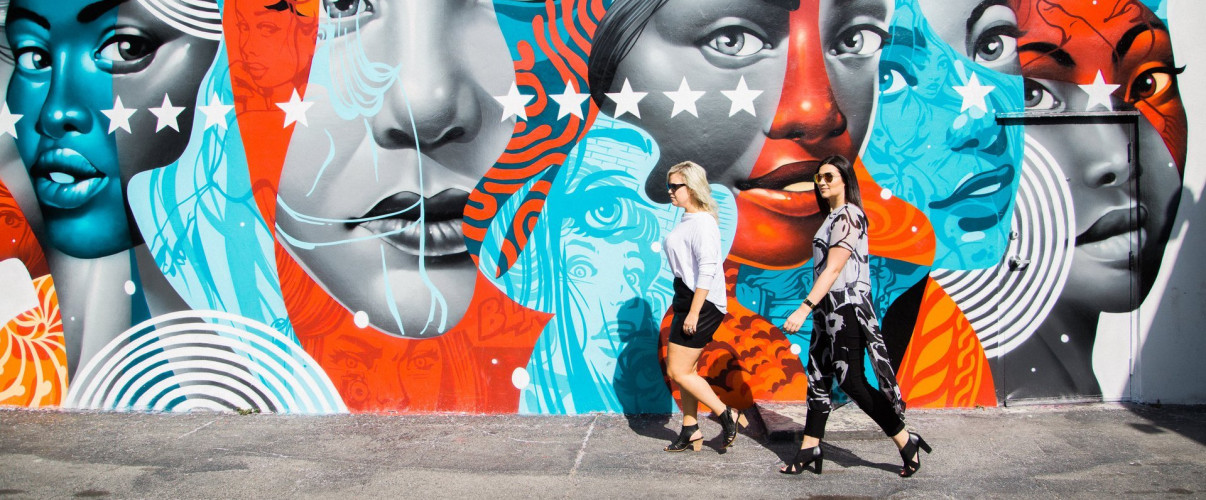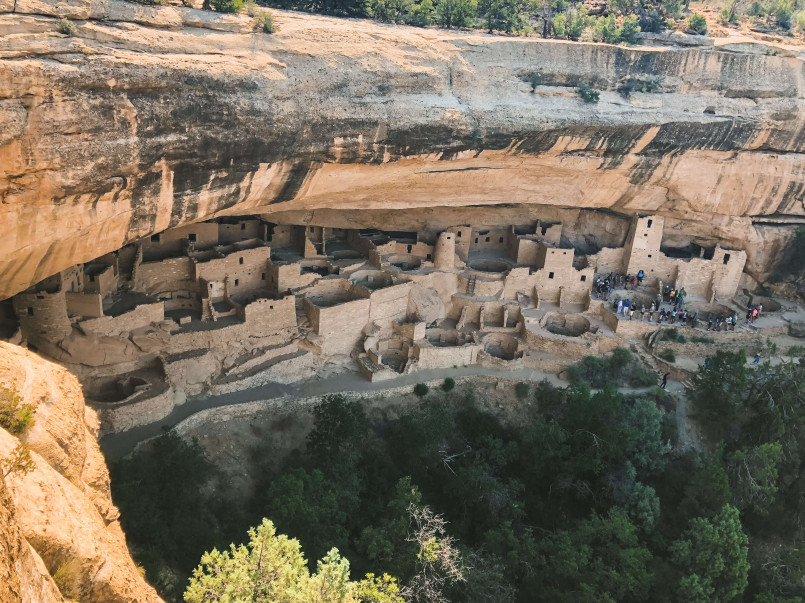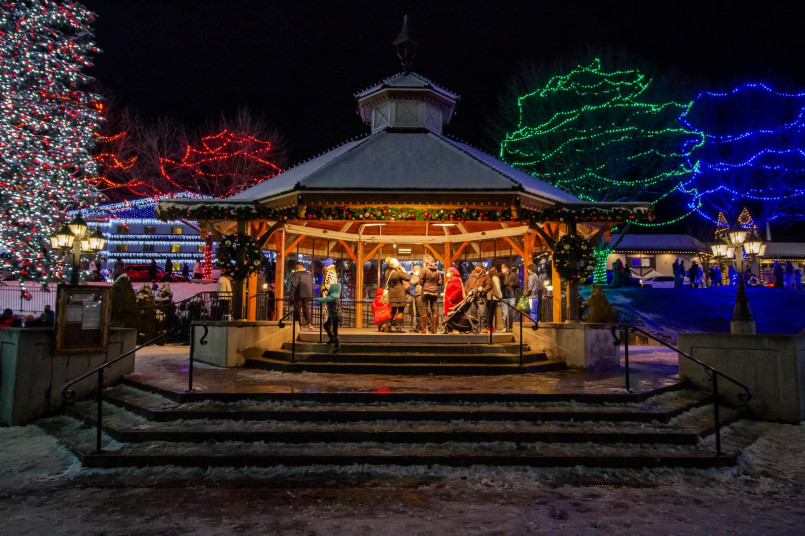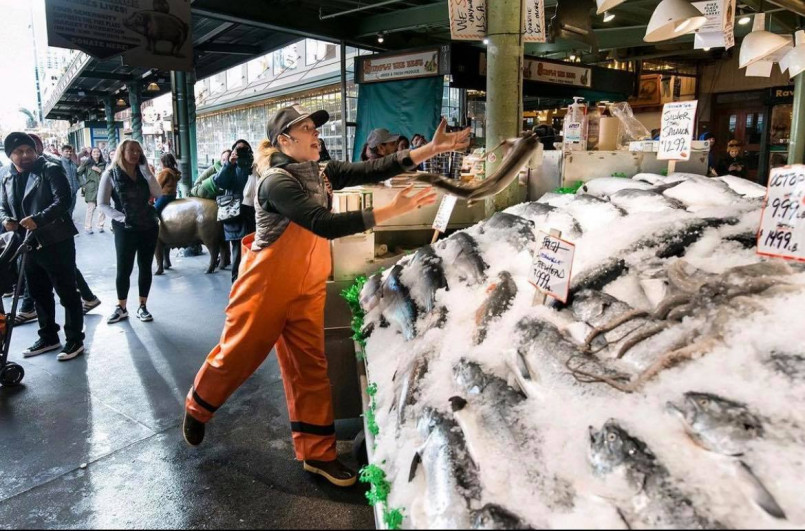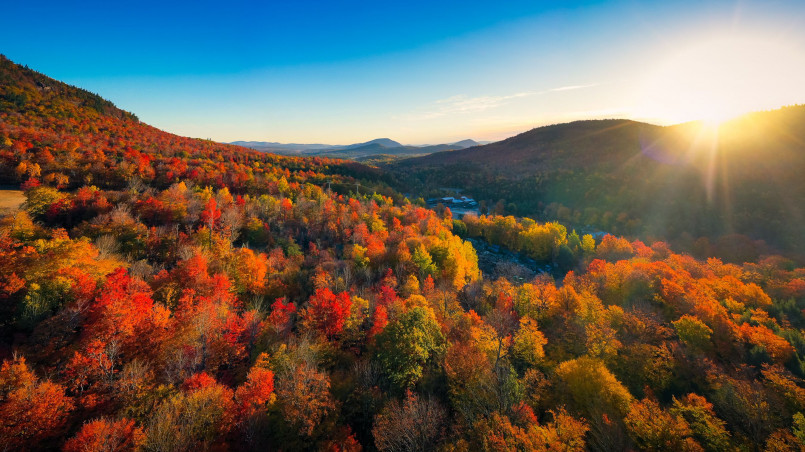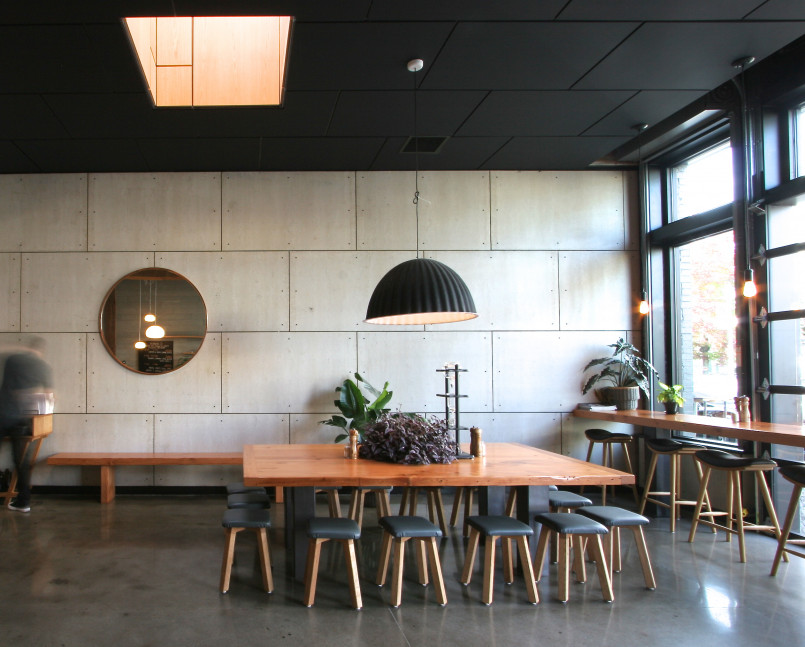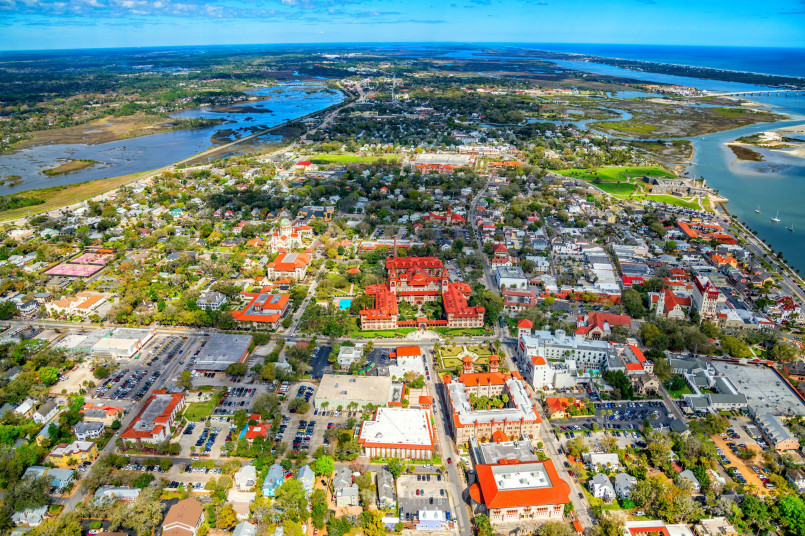Urban art has transformed America's cities into vibrant, open-air galleries. From Miami's color-splashed Wynwood Walls to Philadelphia's 4,000+ murals, these cities showcase remarkable street art that tells stories of culture, history, and community revival.
Urban landscapes across America have been transformed into vast, open-air galleries where building walls serve as canvases for extraordinary artistic expression. Street art has evolved from underground graffiti to respected public art that revitalizes neighborhoods, attracts tourism, and tells powerful stories about communities and their histories.
These twelve US cities stand out for their vibrant street art scenes, offering visitors immersive experiences where creativity flows through alleyways, along main streets, and across once-neglected urban spaces. Each destination presents its own unique artistic personality, reflecting local culture while often addressing universal themes.
Miami: Wynwood Walls
Once a warehouse district, Miami's Wynwood neighborhood has become the epicenter of street art in America. The Wynwood Walls, established in 2009 by visionary developer Tony Goldman, transformed the area into an international outdoor museum showcasing more than 50 artists from 16 countries.
The district now features over 200 murals beyond the official Wynwood Walls compound, with new pieces appearing regularly. During Miami Art Week and the annual Art Basel festival, the neighborhood becomes a global hotspot for urban art enthusiasts.
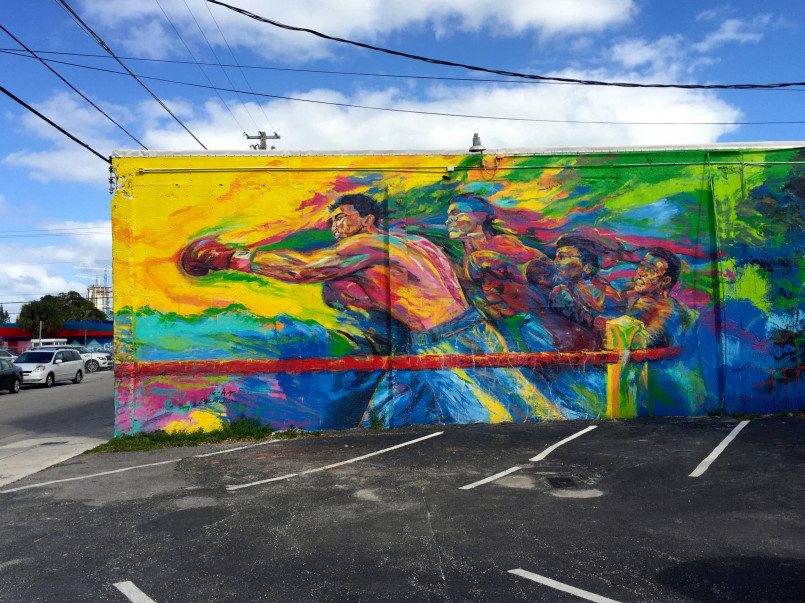
What makes Wynwood special is the concentrated quality of works from renowned artists like Shepard Fairey, Maya Hayuk, and Okuda San Miguel, all within a walkable area. Many restaurants and breweries in the neighborhood have embraced the artistic theme, making it a complete cultural experience.
Philadelphia: Mural Capital of America
Philadelphia rightfully claims the title of "Mural Capital of America" with more than 4,000 public artworks adorning the city. The renowned Mural Arts Philadelphia program, established in 1984 as an anti-graffiti initiative, has evolved into the nation's largest public art program.
What distinguishes Philadelphia's approach is its focus on community engagement and social impact. Many murals address themes of justice, equality, and local history, created through collaborative processes involving residents.
The city offers mural tours by foot, trolley, train, or bike, allowing visitors to explore different neighborhoods while learning the stories behind these massive artworks. Notable murals include "Philadelphia Muses" by Meg Saligman and "Common Threads" by Big Mouth Productions.
New York City: Five Boroughs of Art
As the birthplace of modern graffiti in the 1970s, New York City holds a special place in street art history. Today, its scene has evolved dramatically across all five boroughs, from the Bushwick Collective in Brooklyn to the vibrant walls of the Bronx and Queens.
The Houston Bowery Wall in Manhattan serves as a rotating canvas for internationally acclaimed artists. Meanwhile, the 100 Gates Project has transformed security gates in the Lower East Side, East Harlem, and Staten Island into works of art.
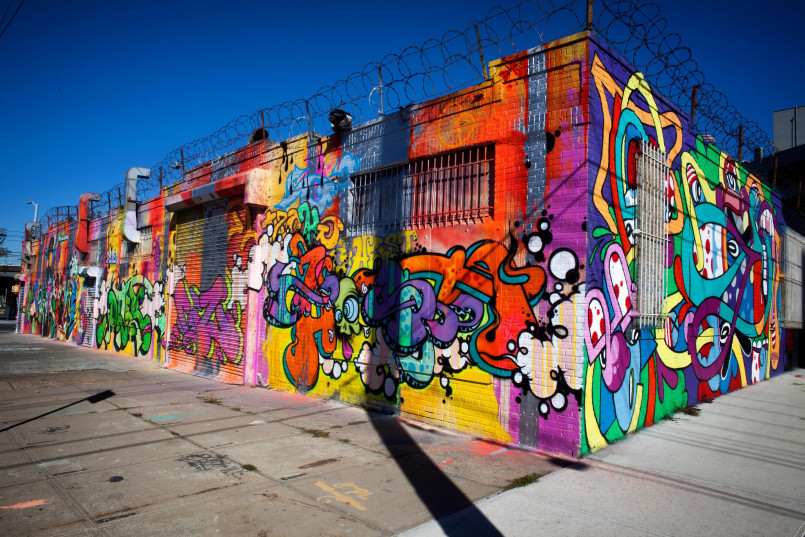
What makes New York unique is how street art continues to evolve alongside the city's constant reinvention. From political statements to abstract masterpieces, the city's walls reflect its diversity, energy, and cultural significance.
Los Angeles: Arts District and Beyond
Los Angeles boasts multiple hubs for street art, with the Downtown Arts District serving as the primary concentration of murals and graffiti. The city's perfect weather conditions help preserve outdoor artworks, allowing pieces to remain vibrant for years.
Beyond downtown, areas like Venice Beach, Melrose Avenue, and the alleyways of Hollywood showcase diverse styles. The city's connection to the entertainment industry often influences its street art, with celebrity portraits and film references appearing alongside more traditional urban art forms.
Los Angeles has also embraced massive building murals, including works by artists like JR, Retna, and Shepard Fairey that span multiple stories. The annual Mural Festival continues to add to the city's impressive collection.
Detroit: Eastern Market and Revival
Detroit's street art scene embodies the city's resilience and rebirth. The Eastern Market district features more than 150 murals created through the annual Murals in the Market festival, making it one of the densest concentrations of street art in the country.
The Grand River Creative Corridor and the Belt alley in downtown showcase how art has been instrumental in Detroit's revitalization efforts. Many abandoned buildings have been transformed into canvases, turning symbols of economic decline into beacons of creativity.
What makes Detroit's scene particularly compelling is how it often addresses themes of renewal, industrial heritage, and community pride. Both local and international artists have contributed to the city's visual landscape, creating a dialogue between Detroit's past and its future.
Chicago: Public Art Program
Chicago's street art scene benefits from the city's strong public art tradition, including the innovative Wabash Arts Corridor in the South Loop. This "living urban canvas" features massive murals by local and global artists, many spanning several stories high.
The Pilsen neighborhood, with its rich Mexican-American heritage, offers culturally significant murals that date back decades. Meanwhile, neighborhoods like Logan Square and West Town showcase more contemporary street art styles.
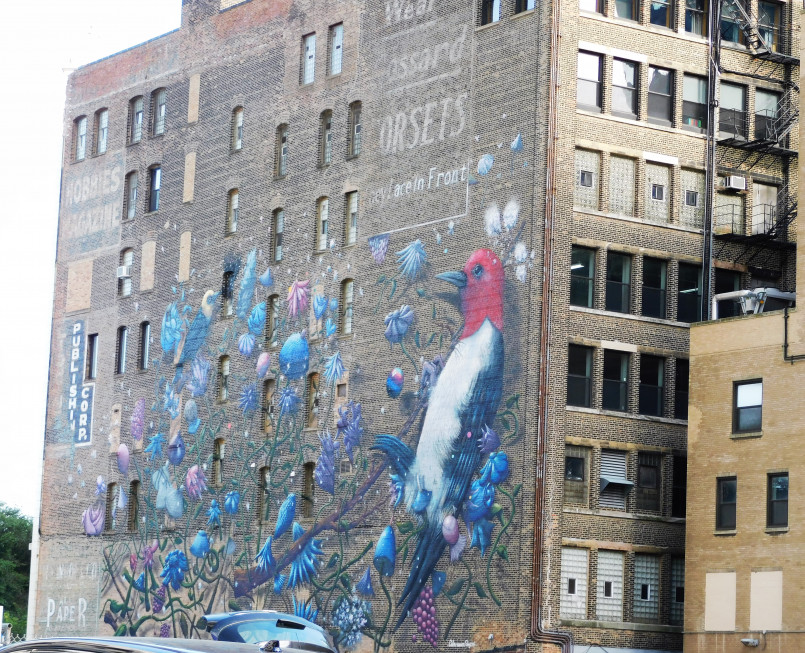
Chicago's harsh winters pose challenges for outdoor art, but the city's commitment to public art remains strong. The B_Line project along the Blue Line train route and various neighborhood festivals continue to add new works to the city's collection.
Austin: Creative Culture and Expression
Austin's street art reflects the city's motto of "Keep Austin Weird" with eclectic, often whimsical murals spread throughout the city. The HOPE Outdoor Gallery was a pioneering legal graffiti park that has now moved to a new, expanded location.
The East Austin neighborhood has emerged as the primary area for street art, with the annual EAST studio tour showcasing many outdoor works. Interactive pieces like the "Greetings from Austin" postcard mural and "You're My Butter Half" have become popular photo spots.
What distinguishes Austin's scene is its playful character and how it integrates with the city's music and cultural identity. Many local businesses commission murals, creating a commercial-artistic partnership that keeps the scene vibrant.
Portland: Street Art Scene
Portland's street art scene perfectly captures the city's creative, eco-conscious spirit. The Alberta Arts District and Central Eastside Industrial District feature numerous murals, many with environmental and social justice themes.
The Portland Street Art Alliance advocates for artists and helps facilitate new projects throughout the city. Portland's annual Forest For The Trees event brings artists together to create new murals, continuously refreshing the city's visual landscape.
What makes Portland's street art unique is how it often incorporates elements of the Pacific Northwest's natural beauty alongside urban themes. The city's progressive values are frequently reflected in works addressing climate change, equity, and community resilience.
Denver: RiNo District
Denver's River North Art District (RiNo) has transformed from an industrial area to a street art destination. The annual CRUSH Walls festival has been instrumental in this evolution, bringing artists from around the world to create new works each year.
Beyond RiNo, neighborhoods like Santa Fe Arts District and South Broadway also feature significant murals. The city's location and culture influence many works, with mountain landscapes and Western themes appearing alongside contemporary urban imagery.
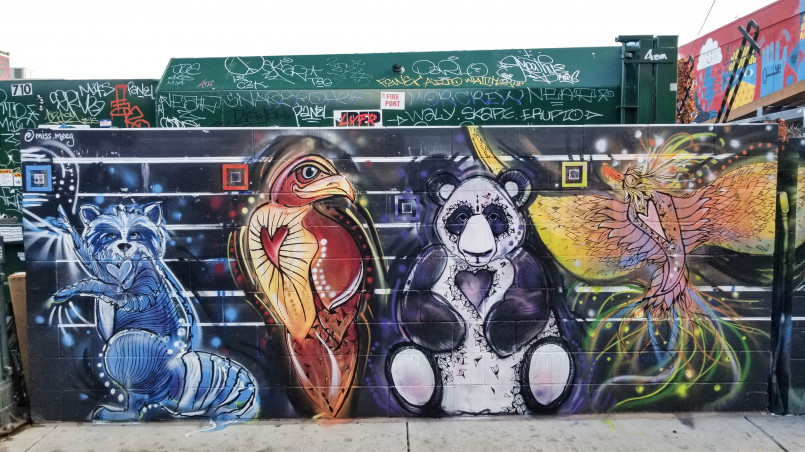
Denver's scene benefits from strong municipal support, with the Urban Arts Fund providing resources for new projects. The elevation and dry climate also help preserve outdoor art, allowing pieces to maintain their vibrancy longer than in many other cities.
San Francisco: Mission District
San Francisco's Mission District has one of America's oldest and richest mural traditions, dating back to the Chicano art movement of the 1970s. Balmy Alley and Clarion Alley contain dense collections of politically charged murals that address gentrification, inequality, and cultural identity.
The city's mural scene is notable for its political awareness and community involvement. Organizations like Precita Eyes Muralists maintain the tradition of community-based public art, offering tours and educational programs.
Beyond the Mission, areas like the Tenderloin and SoMa feature more contemporary street art styles. The tension between San Francisco's counterculture history and its current tech-influenced transformation is often reflected in these works.
Nashville: Emerging Mural City
Nashville's street art scene has exploded in recent years, with the 12South and Marathon Village neighborhoods leading the way. The city's connection to music is evident in many murals, which often feature musicians or musical themes.
The Nashville Walls Project has been instrumental in bringing international artists to the city while also supporting local talent. Instagram-friendly murals like "What Lifts You" (the angel wings) by Kelsey Montague have become iconic photo opportunities.
What makes Nashville's scene interesting is how it balances tourism-friendly art with more challenging works. As the city continues to grow rapidly, its street art often comments on the changing nature of the community and efforts to maintain its cultural identity.
Richmond: Mural Project
Richmond, Virginia, has quietly developed one of the most impressive street art collections in the country through the Richmond Mural Project. This initiative has brought over 100 murals to the city with the goal of making Richmond a landmark destination for public art.
Areas like the Arts District and Manchester showcase diverse styles from realistic portraits to abstract compositions. The annual Richmond Street Art Festival continues to add to the city's collection.
What distinguishes Richmond's scene is its thoughtful integration with the city's complicated history. Many works engage with historical themes, creating a dialogue between past and present in a city still reconciling with its Confederate legacy and its role in both slavery and civil rights.
Frequently Asked Questions About 12 Amazing US Cities for Street Art and Murals You Need to Visit
What's the best time of year to visit these street art cities?
The ideal time to visit most street art cities is late spring to early fall (May-October) when weather conditions are favorable for walking tours. Cities like Miami and Los Angeles offer year-round viewing opportunities due to mild climates. Many cities host annual mural festivals during summer months, providing opportunities to see artists at work and view freshly created pieces.
Are there guided tours available for street art in these cities?
Yes, most of these cities offer official guided street art tours. Philadelphia's Mural Arts Program runs comprehensive tours by foot, bike, and trolley. Miami's Wynwood offers official walking tours of the Wynwood Walls and surrounding areas. Many cities also have self-guided tour apps or maps available through their tourism offices or specialized street art organizations.
How often do these murals change?
The permanence of street art varies significantly by city and location. Some murals, particularly those commissioned through official programs like Philadelphia's Mural Arts, may remain for decades. Others, especially in rapidly evolving districts like Wynwood in Miami or the Bushwick Collective in Brooklyn, may change annually or seasonally. Festival walls and designated legal graffiti areas typically change most frequently.
Is street art legal in these cities?
The featured murals in these cities are predominantly legal, commissioned works. Many cities have established programs, permits, and designated areas for street art. However, unauthorized graffiti remains illegal in all these locations. The legal status represents a significant evolution from street art's origins, as cities have recognized the cultural and economic benefits of supporting urban art.
Which city is best for photography enthusiasts interested in street art?
Miami's Wynwood district offers perhaps the most photogenic concentration of street art, with vibrant colors that pop in photographs and good spacing between works. Los Angeles provides dramatic large-scale pieces with mountain backdrops in some areas. For those interested in mural/architectural integration, Detroit and Philadelphia offer compelling compositions where art and urban infrastructure create unique visual narratives.
Are there any street art cities that are more family-friendly than others?
Philadelphia stands out for family-friendly street art experiences with its educational tours and focus on community storytelling. Austin's whimsical, often playful murals appeal to children. Nashville's interactive wings and music-themed murals engage younger visitors. Cities may have specific districts that are more appropriate for families, while other areas might feature more challenging or political content.
